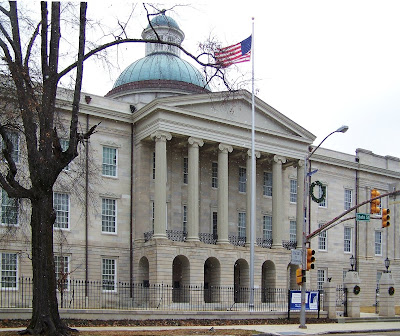
Bob and I walked from First Baptist Church, past Brown Chapel, and crossed the Edmund Pettus Bridge on a cold morning in December. As we were returning to town a friendly black man passed us and volunteered that he is sixty, and that, as a teen, he marched across this bridge and was arrested. He seemed proud of having participated in that march, as he should be.
Crossing the Edmund Pettus Bridge on foot was a focal point for me when we planned this trip, the thing I most wanted to do. I remember Bloody Sunday in 1965 when police and thugs on horseback attacked marchers on their way across this bridge to Montgomery to demand the right to vote. At that time it was life-threatening for blacks to even try to register to vote. Even if they didn't get killed or beaten, poll taxes of $1.50 for every year of age past 21 and impossible tests about the Alabama Constitution blocked voting. The marchers were turned around that Sunday, beaten, chased away, but they were not stopped for long. The attrocities of Bloody Sunday and the subsequent march from Selma to Montgomery focused national attention and got the voting rights legislation passed. The march from Selma to Montomery was the last major march of the Civil Rights Movement.





























